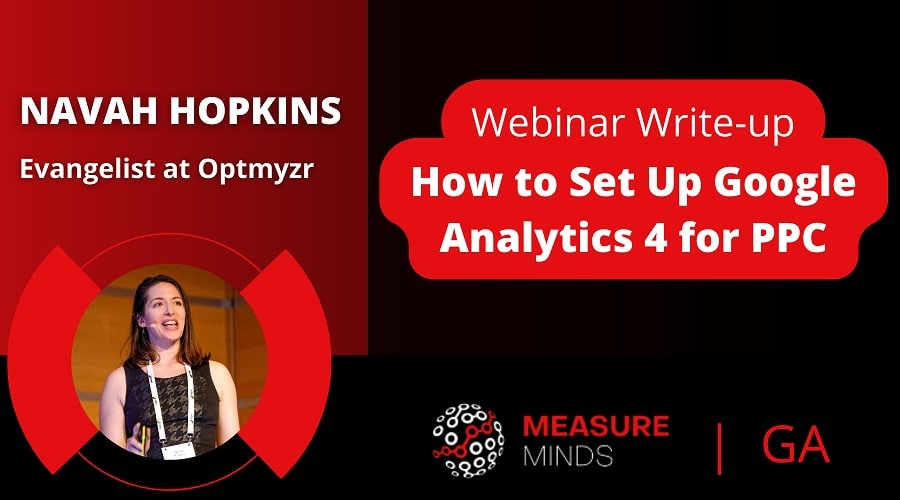
How to Set Up Google Analytics 4 for PPC
There are lots of Google Analytics 4 resources out there. But most of these speak to the SEO side of the tool. PPC marketers have some very specific questions. So far there’s not been much much opportunity to get the answers we need.
But don’t worry, this article is here to help! Today, we’ll be focusing on GA4 for PPC. We’ll show you everything you need to succeed in the tool.
This is a write-up of the talk given by Navah Hopkins at GA4ward MKIII. You can find his slides here, and the recording is below:
What PPC marketers want to learn

We asked our LinkedIn network what they as PPC marketers, want to learn in GA4.

The response we received wasn’t that surprising. Audiences were top of mind, this is where the lion’s share of PPC resources live.
Next up were templates. Even though GA4 essentially gives a blank canvas, most PPC marketers prefer pre-configured views.
Finally, we had reporting. How do we translate the metrics that may have been lost in GA4? How do we convey new metrics that we didn’t have before?
We’re going to add two elements to this list: set-up and conversion tracking. During set-up, there are some PPC-related factors to consider. Google Marketing Live presented a number of useful tips for conversion tracking in GA4, which we’ll share later.
So, without ado, we’re going to jump into the set-up portion of this article.
How to set up GA4 for PPC
Custom vs Out-of-the-box
An interesting topic of discussion at the Optimizer PPC town hall was how we use the set-up assistant in GA4. Lots of people don’t like to use this method, but it does act as a useful checklist to give clients. Let’s work out way through each area of the setup assistant.

Google Signals
One of the key areas that are worth discussing is Google Signals. If you don’t use Signals, you’ll be at odds with GDPR. It’s also one of the ways from a PPC standpoint, that you’re able to get far more conversion tracking and build out audiences a bit better.
But where do you draw the line? When thinking of Google Signals, you need to consider whether you’re a PPC first marketing channel. If so, you’ll probably want to leverage this tool. If not, you probably won’t.
The other consideration is whether or not you are an international brand. If you are, you can pick and choose which marketing channels you allow to feed into it. Otherwise, leave Signals off.
Audiences
Audiences in GA4 give us the width and breadth of customers, so is definitely something to set up.
You need to think carefully about how you define your audiences. This an area that people often check a box and then forget about.
Conversion tracking
It’s important to use both micro and macro conversions for your conversion tracking in GA4. PPC as a whole has undergone socialization. We’re used to being focused on keywords as targets, but now we’re more focused on audiences.
To help a campaign learn, it’s important to have micro-conversions even if you treat them as secondary conversions.
So, make sure you set up conversions in GA4, and that you check their validity against the native conversion tracking.
The most powerful steps are in advanced settings
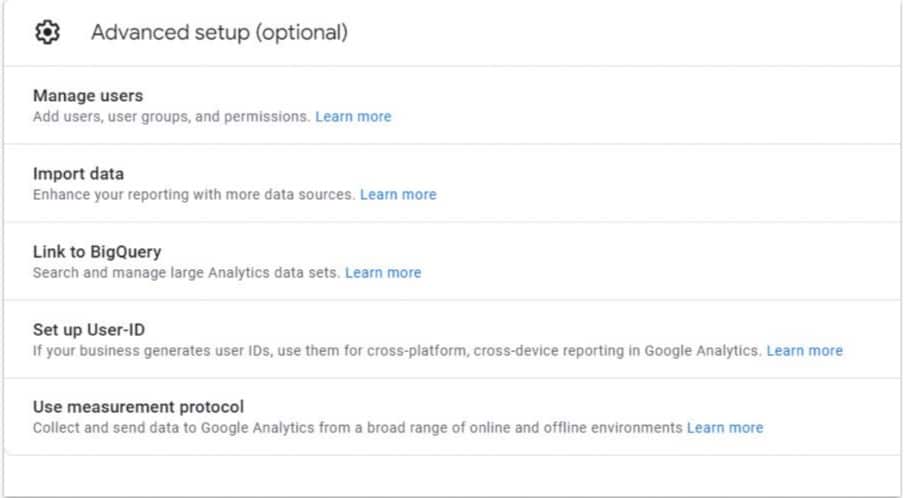
Some of the important steps are under the ‘advanced tab’, This includes linking to Big Query, and backing up data.
Of course, a key part of GA4 reporting for PPC is also importing data. From an offline conversion standpoint, we need to ensure we are feeding in data, not just from Google campaigns, but from other advertising channels.
There was an exciting announcement at Google Marketing Live. Enhanced conversions will soon help build customer match lists. But in order for this to work, we need to make sure we’re feeding in information. That’s why importing data is so important.
Data streams vs data sources
Creating separate data streams
This is one of the most important steps if you have disagreements with your SEO teams. If you’re using the same domain as your organic friends, you don’t need to do anything further. But if you’re using a vanity domain or a subdomain and want separate tracking, you will need to add it in as a data stream.
App configuration
Something else to bear in mind is app configuration. This is important regardless of whether you’re tracking app campaigns or looking at IOS tracking. To pull in the information you need, apps must be configured correctly.
Google Tag Manager configuration
Configuring Google Tag Manager is an important step in the set-up of both GA4 and tracking in a privacy-first world. Take care to make sure the tool can receive the information it needs.

Make sure that all your apps and domains are appearing on the data streams page. You’ll get an alert each time you add new sources. You can ignore this alert unless you’re combining enough initiatives you should.
If you have a vanity domain or different country domains, but different cohorts, ensure they are in the same data stream.
Data imports
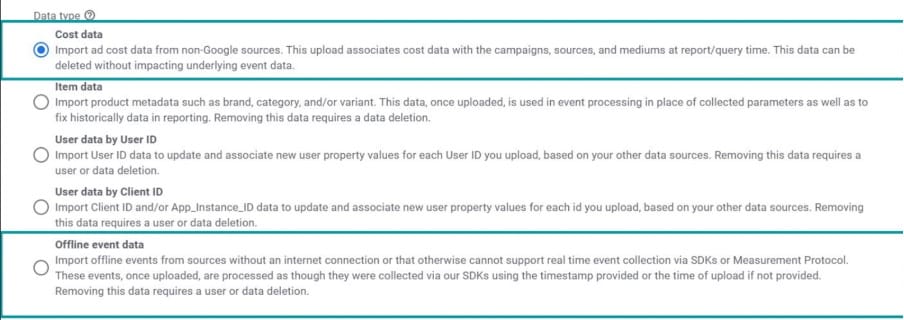
There are two very important pieces to data imports.
The first is cost data. This is very important for enabling you to factor in all your other channels. It ensures you can set up revenue goals and tracking, helping you with optimizing PPC campaigns with GA4.
The second piece is offline event data. We need to make sure that we’re synching through every possible bit of conversion data that we can. This means keeping a close eye on the landing page report in GA4, and other key campaign areas. This ensures that our campaigns can perform well.
We’ll also be providing useful information about other parts of the business. If our SEO friends are part of that conversion path, they get the information they need.
Conversion tracking
Which Events Are Your Conversions?
Below are some examples of conversion events in Google Analytics 4. These are a general starting point and should be built on top of. Don’t introduce conversion events that are not mission-critical.
- sign_up
- purchase
- submit_form
- start_trial
- call
You’ll notice that these examples are all in lower case and words are separated by underscores. GA4 is very strict when it comes to syntax. Make sure you follow this style with all your conversion events if you want them to work.
From a micro conversion standpoint, you may want to look at first users vs returning users. This will enable you to start a conversation about pmax campaigns (optimizing for net new customers, lifetime conversion value, etc).
With GA4 conversion tracking, do not feel compelled to re-add every event from UA. To put it simply, if it doesn’t spark joy, you don’t need to recreate it. This is a golden opportunity to clean up a lot of those events, especially given that you can only have 50.
Audit conversion events

This is key If you want to leverage GA4 for PPC. We cannot overstate how important it is to audit your conversion tracking for primary and secondary conversion actions. You need to be absolutely sure that your conversion tracking is working as it should be.
Just in case you didn’t know, primary conversions impact the algorithm and feed into your reports. Secondary conversions do not impact the algorithm or feed into your reports.
Consider making primary events into secondary ones until you are sure they are working properly. Why do this instead of marking them as conversions? At the end of the day, you want to be using the same sources of truth as other departments.
For that, you need GA4 events that are one-to-one. If you are only using your own numbers, there will probably be infighting and attribution questions.
So, switch to secondary events, and once things are moving the right way, go back to primary.
Let’s talk about attribution for a moment
Last Click is being pushed away. If you attended Google Marketing Live, you would have heard how Last Click was talked of as ‘last year’. There are a number of things that need to be phased out.
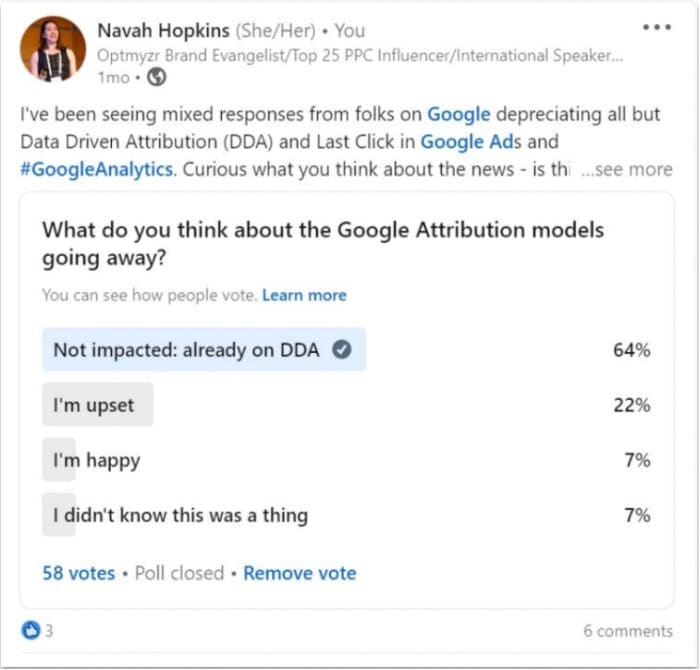
The history of data-driven attribution (DDA) is helping big companies that have big thresholds for success. Suddenly, it’s now available for everyone.
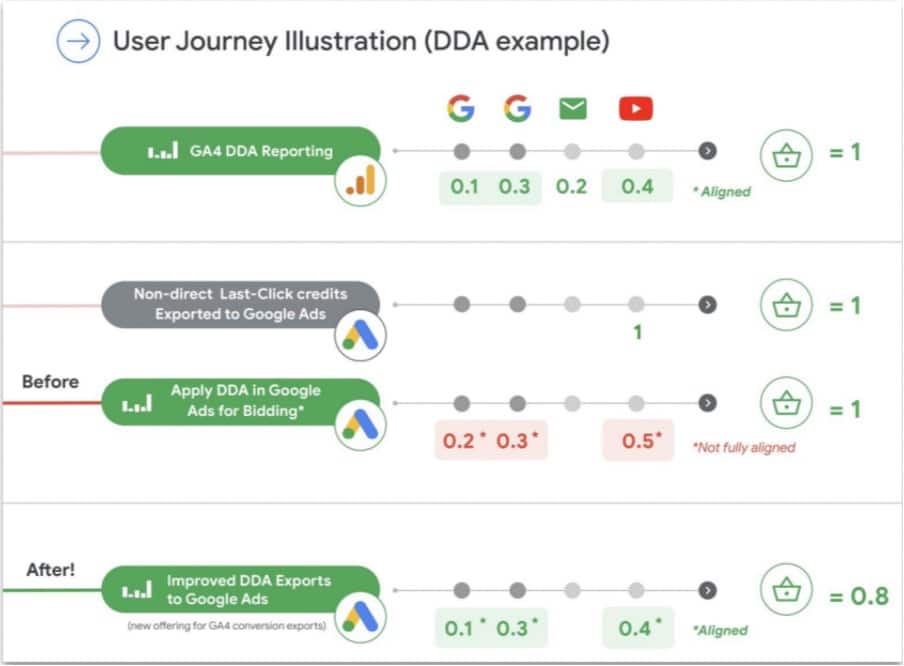
You only need to switch to DDA when you are truly ready. DDA uses modelling which doesn’t always get it right, especially if you have a tiny data set. You may decide to stay on Last Click until you hit certain thresholds.
That’s perfectly fine because Google will still feed the Google Ads credit into the algorithm. This is the case even if the conversion action didn’t yield the last click before the conversion.
The thresholds for DDA are not nearly as bad as they used to be. As long as you’re hitting 1,000 to 3,000 users on your site every 30 days, you should be fine. It becomes more tricky when you’re getting a lower number of users. In this instance, you might start hitting modelling and thresholding issues.
Note: DDA is just a reporting tool. You will have fractional conversions, but that doesn’t mean you have fractional customers. It’s very important to explain this to your stakeholders. If for example, DDA says 0.8, it does mean you have 0.8 of a customer. It just means that a particular entity was responsible for 0.8 of the conversion.
Lookback windows
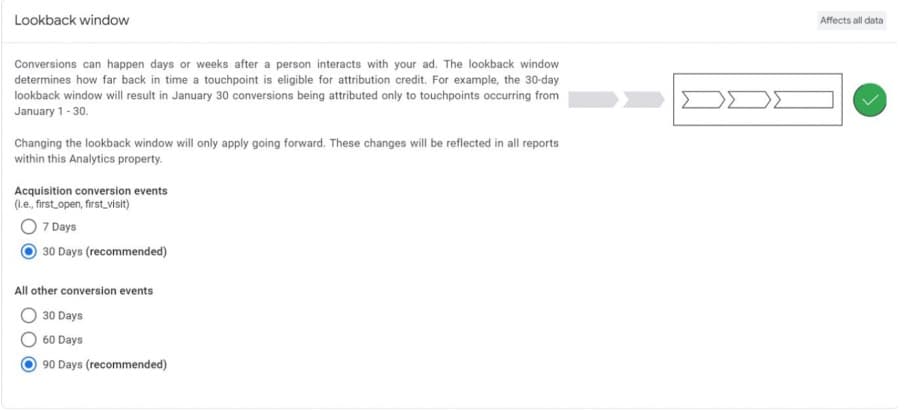
You will need to set your lookback windows to 30 and 90 days, instead of the default setting of 7 days and 30 days. For anything other than impulse purchases you will want the full lookback window.
You’ll also want to ensure that from a conversion tracking standpoint, you’re tracking unique conversions. Because we have to lean into micro-conversions so much with GA4, you won’t want every conversion action flowing through.
Track what you need to
This is an essential part of GA4 reporting for PPC. This covers tracking customers and useful actions, it does not mean tracking everything on the site. You might track something as a regular action to inform your SEO conversation. But it doesn’t necessarily need to be tracked as a conversion action.
Recovering missing metrics
With GA4s rollout, we were used to a lot more things missing. Many of us have gotten into the habit of assuming because an event wasn’t there before, it isn’t now. This is often not the case.
Take time to click the edit button on your reports. Go through all the possible metrics that are available now, based on events and triggers you’ve set. As long as you have purchased and set up as an event, and are capturing the value, you’ll have a revenue metric to piece through.
These questions are baked into GA4’s conversational reporting
One of the best GA4 features for PPC is its ability to answer questions. Of course, it won’t necessarily be able to answer every question. Sometimes, it will go after the wrong information.
There are, however, a number of useful questions you can ask the data, without even needing to build a report. It’s useful to get into the habit of asking questions. By doing so, you can gain helpful information you can give to your clients.

You’ll also get a graph that will help clients to visualize data more easily.
Just remember, all these questions are dependent on the use of the right syntax. You don’t want to have undefined signals or metrics. The most common reason this might occur is that you use lowercase, or because you haven’t formatted correctly.
Looker Studio can help with more custom/legacy metrics
Looker Studio will be able to help you with the issue or missing metrics. But you might not need to use all of them.
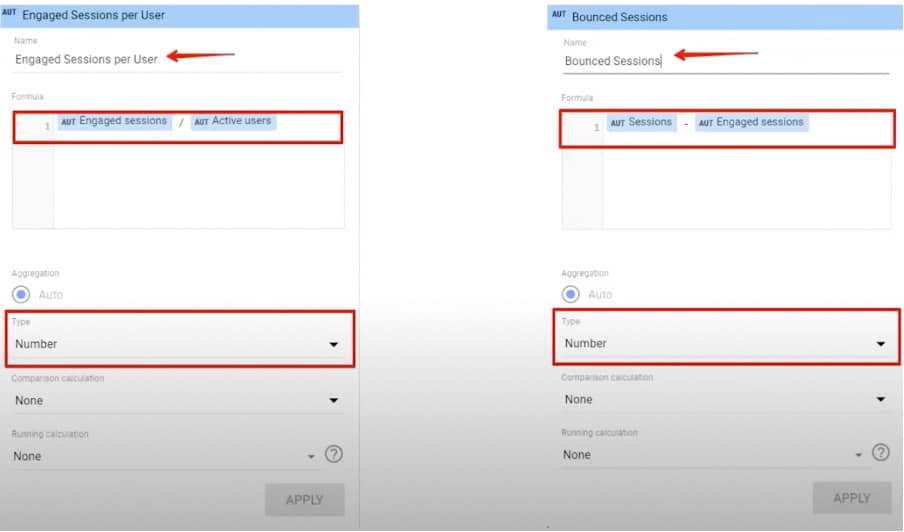
For example, bounce rate and bounced sessions are less useful than engaged sessions per user. This is because the bounce rate can be positive or negative. Levels of engagement are much more useful in informing you of the effectiveness of content.
From an SEO standpoint, you might miss the bounce rate But for all other purposes, engaged sessions will tell you what you need to know.
Undefined? Part of this comes down to source & medium set-up
We’ve talked about how important syntax is for making sure your events are configured correctly.
Remember, a lot of people have already done the work of creating events and UTM builders. You don’t need to do all this yourself. Remember, to avoid human error, it’s okay to borrow people.
If you’re a small site, you might not get enough data for modelling
As mentioned, if you’re a small website, you might struggle with modelling. GA4 is a hybrid solution between SMEs and SaaS businesses. If you’re not able to work on growing your site, you may want to look at other PPC tools and analytics solutions.
A campaign ID is missing
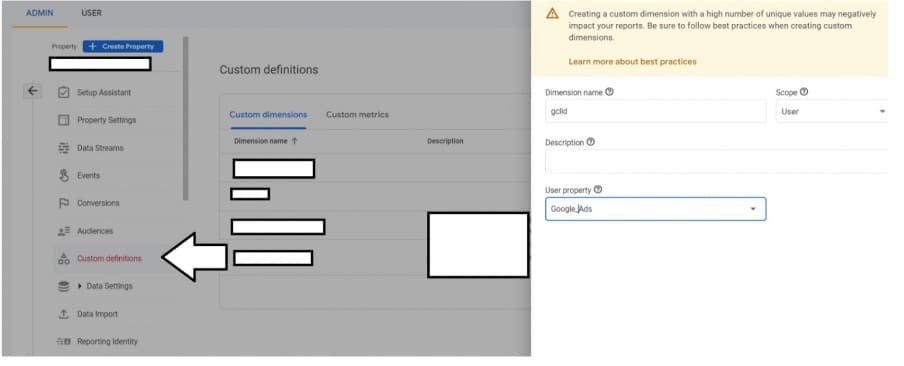
If your campaign ID is missing, it’s a matter of making sure your GCLID is set up correctly. This is done under custom definitions, make sure you set up the property as Google Ads.
GA4 audiences for PPC
Determining the data points influencing audiences
When it comes to setting up Google Analytics 4 for PPC, this is where a lot of our utility is. Dig through every source and flesh out your audiences. Don’t forget audiences can only be used for reporting purposes if they are big enough.
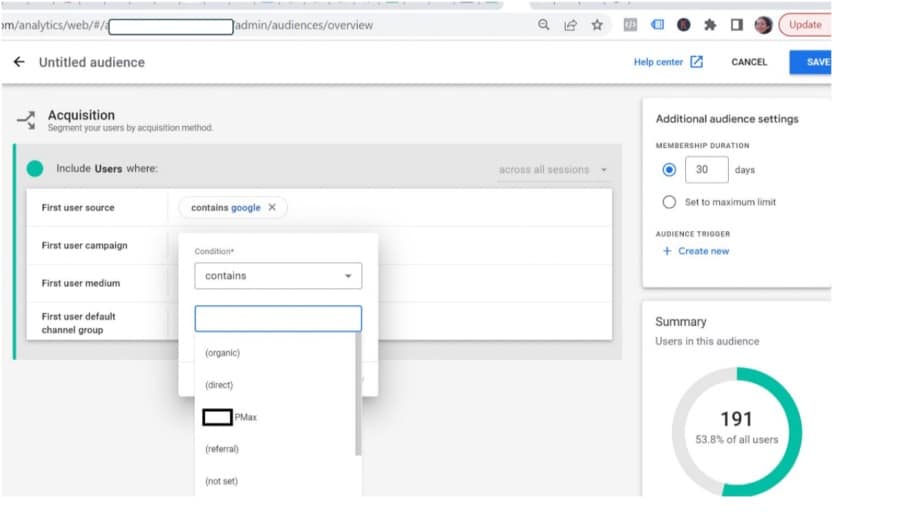
This audience (shown above) containing 191 users, isn’t begin enough for targeting. We would need at least 1,000 members.
If you’re building an audience, make sure you’re setting yourself up for success. Some of the criteria we use for our audiences will have higher values than others. Only think about affinity audiences.
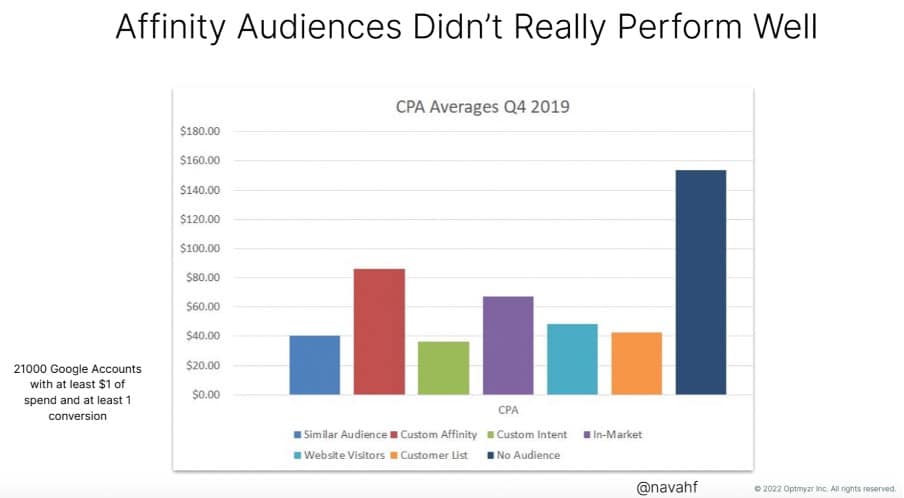
In 2019, we looked at the cost-per-acquisition of different audiences. If you look at the number above, you’ll see that ‘No Audience’ had the worse result. Interestingly, affinity audiences did almost as badly. It’s also worth noting from an in-market standpoint, that Google Signals was right behind affinity. There are certain signals that can sometimes be correct and sometimes not.
The most useful piece of advice for audiences is to treat them as signals, not targets. This will allow you to have a much easier time. Additionally, treat audiences as negatives to proactively exclude rather than target. It’s easier to get rid of the waste than go after the chosen one.
Some audiences will be too small to use
One of the things that many of us got excited about with GA4 is predictive audiences. Sadly, a lot of smaller users won’t have access to these audiences. That’s because they do not meet the minimum requirements.
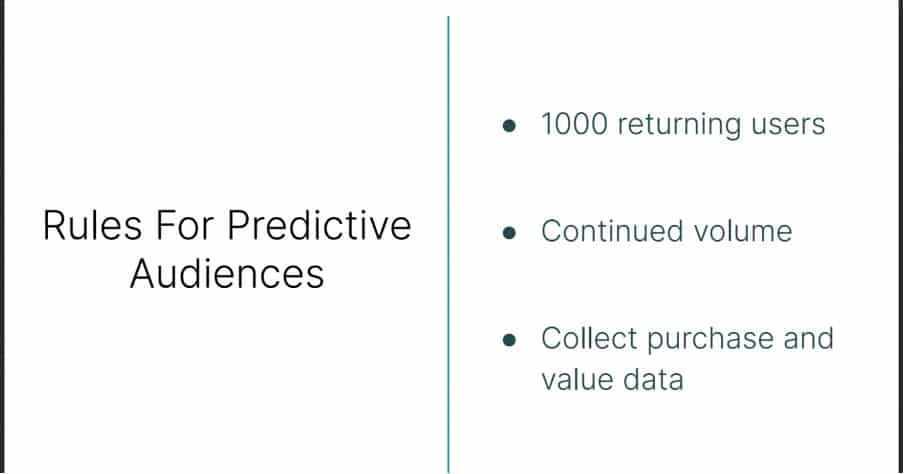
Here’s a handy cheat sheet to help you understand the rules for audiences. If you don’t follow these guidelines, you’ll run into issues.
Templates in GA4 for PPCs
Confirming audiences have synced

It’s very important that you check whether your GA4 link is sending data correctly. Sometimes people do this through the API, other times they do a direct linking.
Remember, if audiences that you import cannot be used for targeting, they won’t work. You may find yourself doing a lot more observation, and putting them in as a pmax signal instead. This can be a useful way of teaching during the early days of a campaign.
Get ideas on templates by asking GA4 questions
In terms of campaign performance, we recommend using the conversational reporting piece.
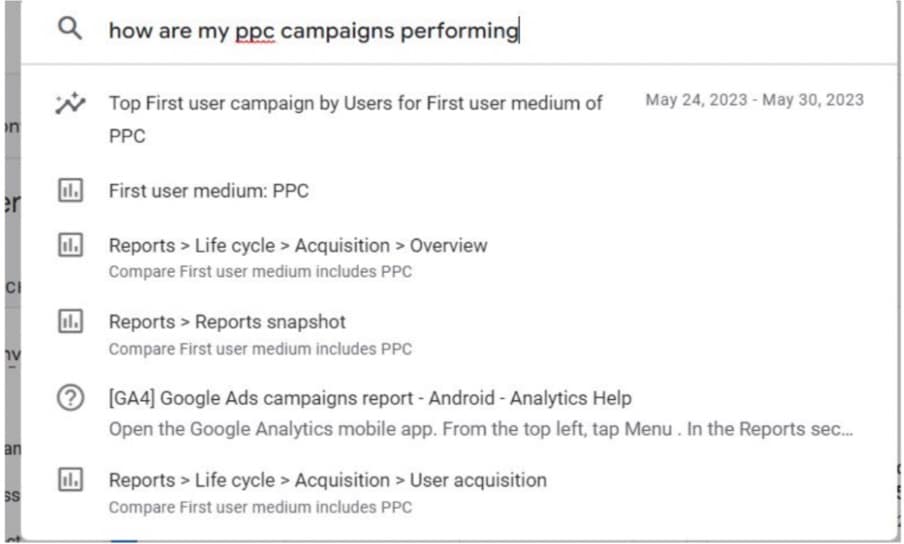
You’ll notice that if we ask ‘How are my PPC campaigns performing?’ GA4 isn’t quite sure what we mean. The more specifically a prompt ties in with a metric that you have already put into GA4, the better chance you’ll have of getting an answer.
Conclusion
The long and short of this article is to build what you need, rather than what you don’t. It’s very important that when you’re building, you’re working towards your goals. Adding something simply because it was in UA is counterproductive.
The fact is, as we’ve explored today, there are many fantastic GA4 features for PPC. So it’s time to implement them as you now know how to set up GA4 for PPC.
Navah Hopkins is the brand Evangelist for Optmyzr, VP of the Paid Search Association, and a veteran of the digital marketing industry. She began as an SEO in 2008, transitioning to PPC in 2012. She manages the strategy and execution of paid media campaigns, as well as helping brands build relationships with profitable partners and customers. Throughout her career, Navah makes a point to give back and loves sharing lessons learned on the international speaking circuit as well as at local universities. She is a frequent contributor to SEJ, SEL, SEMrush, and WordStream blogs/webinars.

- How to Blend GA4 & UA Data Using BigQuery & Looker Studio - 12/07/2024
- How to do a Google Analytics 4 Audit & Mistakes to Avoid - 10/07/2024
- How to Backup & Visualize GA3 Data for Free - 27/06/2024
Good to see a PPC focused piece, great detail!